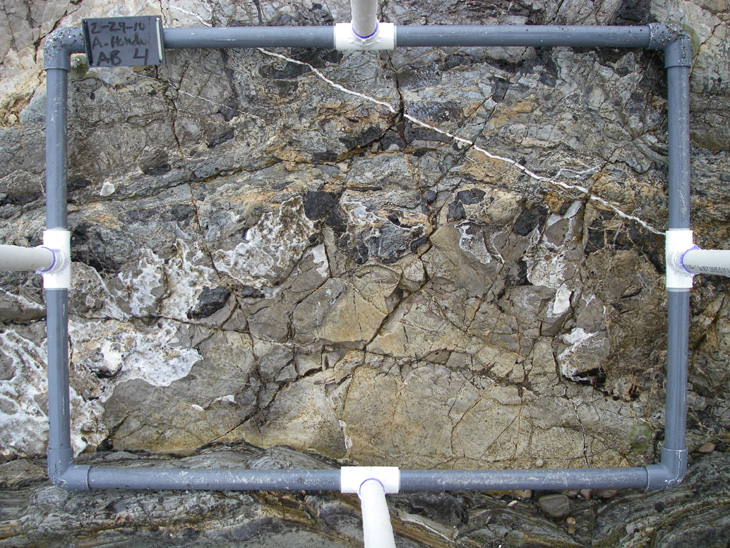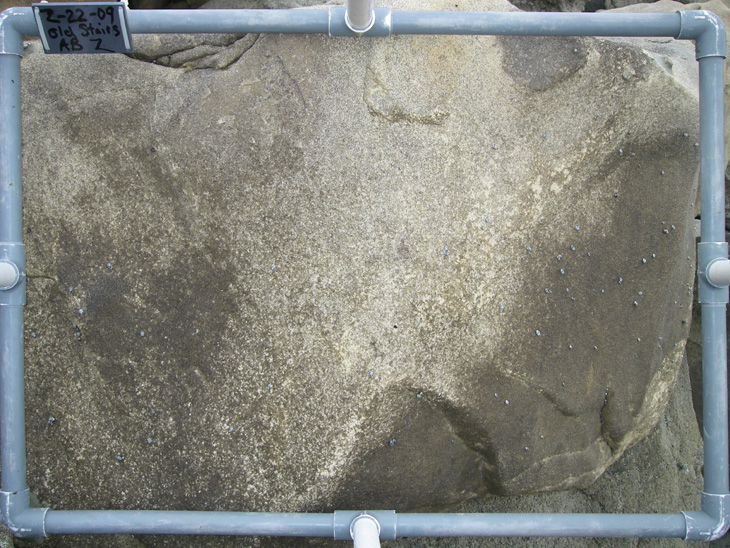Rock Plots | MARINe
Rock Plots
Last updated March, 2012
Previous Species | Next Species
One of the most conspicuous patterns observed in this long term monitoring program is a trend toward zonal transitions among species assemblages. At sites distributed across the latitudinal breadth of the MARINe monitoring network, species assemblages have exhibited periodic, upward shifts in the intertidal. For example, Silvetia assemblages have encroached upon the Endocladia plots, and Endocladia has moved into barnacle plots. These upward shifts appear to be cyclic, with zonal transitions reversing after some time period and assemblages returning to their “original” state. However, with sea-level rise and other climate-change related factors, it is possible that these short-term cyclic zonal shifts could instead become long-term directional change. At most MARINe sites, the area above the barnacles consists primarily of bare rock, but we have not been specifically targeting the “extreme high” zone for change, and thus would be unable to document an upward shift of the barnacle zone.
To address this issue, “Rock Plots” have been recently added at a number of MARINe sites in the Southern California region and on the Channel Islands. These plots will aid in documenting any upward shifts of communities into the extreme high zone, and could potentially serve as an early warning sign of rising sea level or other effects of climate change.



